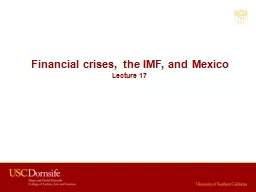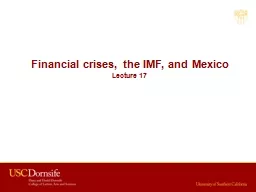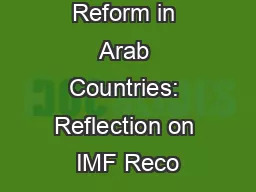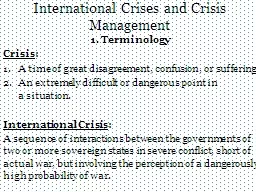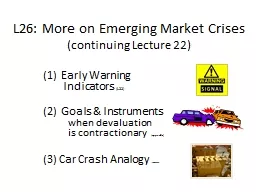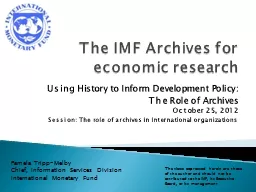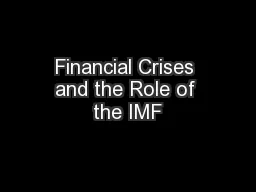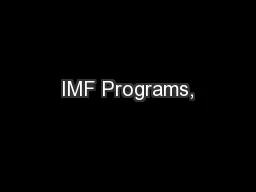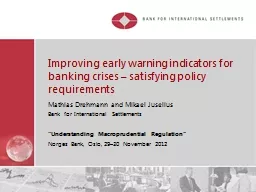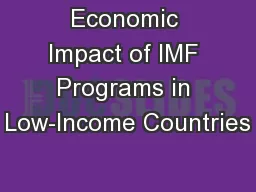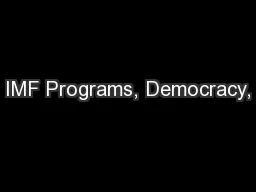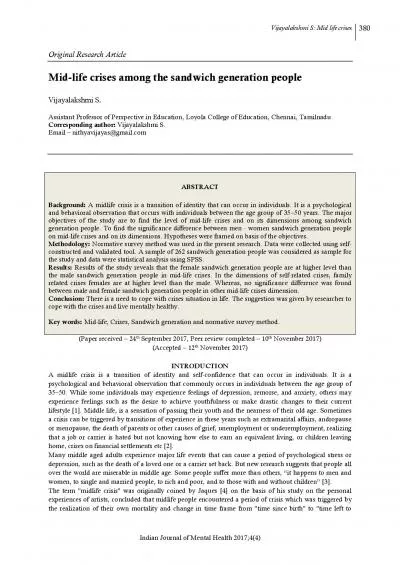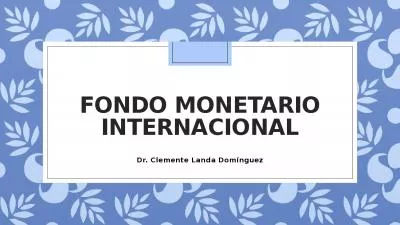PPT-Financial crises, the IMF, and Mexico
Author : tatyana-admore | Published Date : 2018-09-30
Lecture 17 Housekeeping Papers due today Professor Bozovic will be lecturing Oct 28 Professor Graham returns Oct 30 Flexible currencies can avoid crises One tempting
Presentation Embed Code
Download Presentation
Download Presentation The PPT/PDF document "Financial crises, the IMF, and Mexico" is the property of its rightful owner. Permission is granted to download and print the materials on this website for personal, non-commercial use only, and to display it on your personal computer provided you do not modify the materials and that you retain all copyright notices contained in the materials. By downloading content from our website, you accept the terms of this agreement.
Financial crises, the IMF, and Mexico: Transcript
Download Rules Of Document
"Financial crises, the IMF, and Mexico"The content belongs to its owner. You may download and print it for personal use, without modification, and keep all copyright notices. By downloading, you agree to these terms.
Related Documents

